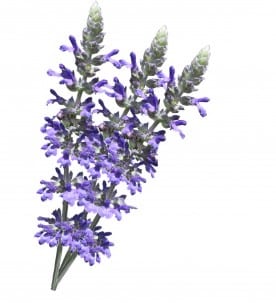

Lavender allergy in dogs can manifest as skin irritation, itchiness, redness, hives, bumps, and hair loss. Dogs may also experience sneezing, coughing, and wheezing. Some dogs may also show signs of an upset stomach, such as vomiting or diarrhea.
Lavender allergy in dogs is caused by airborne allergens, such as pollen, dust, mites, and other substances from fragrant flowers like lavender. These allergens become lodged in the dog’s fur and when the dog licks or scratches it, an allergic reaction is triggered. Additionally, lavender essential oil and other lavender-based products can be an irritant to the skin of a dog, causing an allergic reaction.
The diagnosis of lavender allergy in dogs is based on the observed symptoms as well as any known exposure to the allergen. A veterinarian will likely recommend a skin scraping and/or blood tests to check for the presence of antibodies. It is important to note that some allergies may be similar in appearance to other conditions, so proper diagnosis requires testing.
Lavender allergy in dogs can be very serious. Untreated reactions can lead to discomfort, pain, and disruption in the normal activities of the dog. In severe cases, untreated reactions may result in death. The mortality rate from an untreated lavender allergy in dogs is not known, but some untreated allergy reactions in dogs can be fatal. Therefore, it is important to consult with a veterinarian as soon as possible in order to properly diagnose and treat the allergy.
The treatment for a lavender allergy in dogs depends on the severity of the reaction. In mild cases, it can be enough to simply reduce or avoid exposure to the allergen. In more severe reactions, additional treatments such as antihistamines, steroids, or topical creams may be required. In very severe cases, allergy shots may be necessary. Your veterinarian can provide you with the best advice and treatment plan for your dog.
To prevent a lavender allergy in dogs, it is important to avoid exposing your pet to lavender essential oils, lavender-scented products, and other forms of lavender. Keep your dog away from areas that are heavily scented with lavender, such as gardens or flowerbeds. It is also important to ensure that your dog is bathed regularly to remove allergens that could be causing irritation. If your dog is showing signs of an allergic reaction, contact a veterinarian immediately.
This lavender allergy in dogs is not contagious and will not affect humans. However, it is possible that someone could experience allergic symptoms when exposed to dogs with signs of the allergy, such as hives and skin irritation. In these cases, an allergy specialist may need to be consulted.
Home remedies that may be helpful in managing a lavender allergy in dogs include keeping a dog away from areas where lavender is grown, using a hypoallergenic shampoo on the dog, and avoiding the use of any products containing lavender essential oils.
While these home remedies may be helpful in managing lavender allergies in dogs, it is important to remember that these solutions are not guaranteed. Consulting with a veterinarian for tailored advice is the best way to ensure your pup’s health and safety.
Some dog breeds that are particularly susceptible to lavender allergies are Retrievers, German Shepherds, Siberian Huskies, and Labrador Retrievers. All are prone to adverse reactions to lavender, including skin irritation, itching, and rashes. Furthermore, dogs with long ears or heavier fur coats may experience additional discomfort from the presence of lavenders.
Have you ever encountered your dog having an allergy to lavender? If so, how did your dog respond, and how did you feel when you recognized the symptoms? What strategies did you employ to manage the allergies?
No matter the experience, we hope that your four-legged family is doing well, and we wish you strength and success in any process of managing your pet’s allergies.